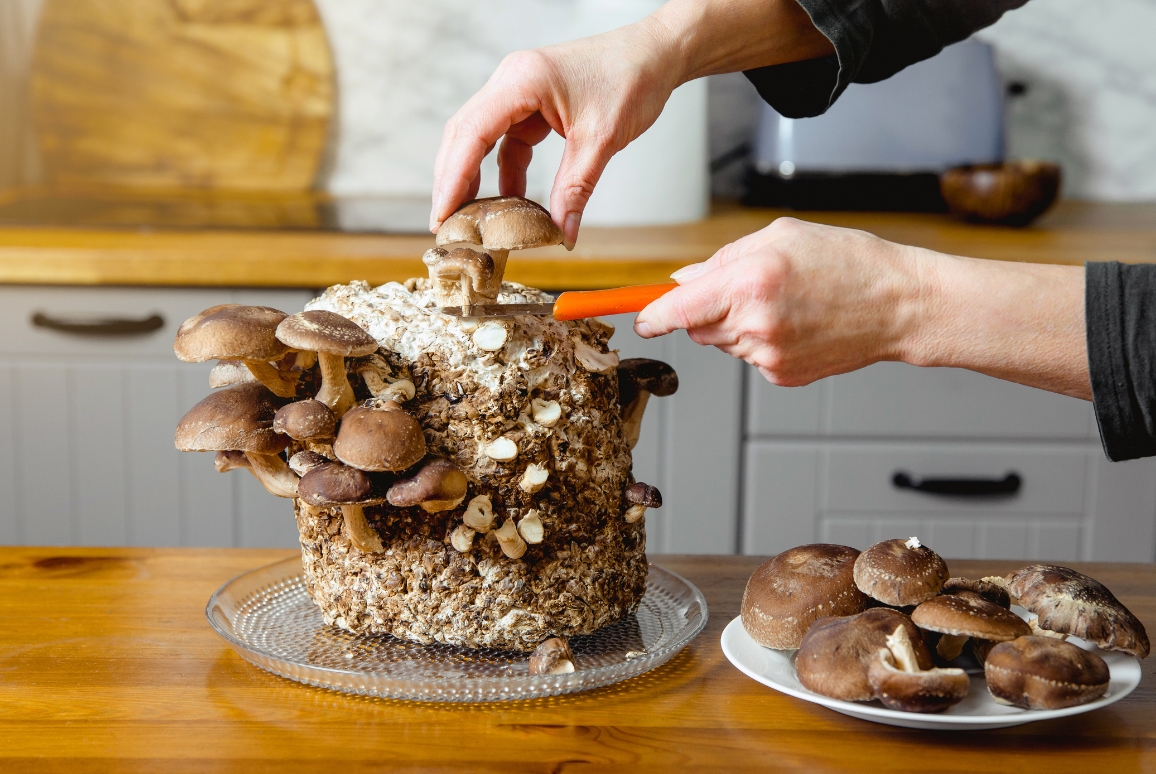Chicory, mushrooms and accessories
Chicory, mushrooms and accessories
The chicory roots are without doubt one of the most popular products on our webshop, and not without reason! After all, growing chicory is surprisingly easy and fast thanks to our seed potatoes, even without a (vegetable) garden! Moreover, home-grown stems taste delicious.
✓ Free delivery from € 40
in Belgium & The Netherlands!
✓ All A-brands
at the best prices!
✓ Customized advice by
our garden experts!
✓ Our customers give us 9.3/10
based on > 25.000 reviews!
Growing mushrooms and chicory: here's how to get started
Vegetable gardening often remains a good intention for many. A shame, really, but it is true that maintaining your vegetable garden takes quite some time. Some crops are also quite fragile, so you need to have the right knowledge. However, growing mushrooms and chicory is child's play and absolutely NOT time-consuming.Our offer of chicory pens
It varies somewhat each year - depending on the weather - but our chicory roots are available every year around the beginning of October. With these, you can very easily (and quickly!) grow your own chicory. There are two types of chicory roots, namely chilled and non-chilled.
- Chilled chicory roots: After the farmer harvests the chicory roots, they are stored in professional cold stores at around 1°C for about two weeks. This allows you to put them into storage immediately after receipt and thus start growing chicory immediately.
- Non-refrigerated chicory roots: These chicory roots were not refrigerated after harvesting. After receiving them, it is best to cool them yourself before putting them into the table.
Growing chicory: our step-by-step plan
- You grow chicory in the dark: Light will cause chlorophyll to form, which would turn the chicory green - so you would grow green chicory.
Did-you-know-that in between: Asparagus - that other white gold - is kept white in the same way. In an asparagus field, you will see embankments so that the asparagus can grow in the dark. As soon as the asparagus pokes its head above the sand, it is staked to prevent it from turning green.
So to grow beautiful chicory, you really need to bury your chicory roots in your vegetable garden. As an alternative to soil, you can also use hay, straw or black plastic. As long as no (sun) light reaches the roots....
But the best thing about chicory roots is that you don't have to grow them in the vegetable garden at all! You can also easily grow chicory indoors (in your garage, storeroom...) in a covered bucket or chicory forcing tray! - Pickling: When growing chicory, first make a pit in topsoil. Then arrange the carrots all nicely next to each other. Are you growing in a bucket or forcing tray? Then fill it 1/3rd full with sowing soil and place the chicory roots next to each other. Then top up with some more sowing and cutting soil so that the chicory roots remain nicely in place.
- Are you growing in the vegetable garden? Cover the carrots with a layer of soil of ± 15 cm. Use as poor soil as possible, such as seed and cutting soil, but definitely not fertiliser-enriched potting soil! Feel free to reuse the soil from your flower and plant boxes, or mix in some peat.
- The soil in which the chicory roots are planted should be moist. However, do not overdo it because too much water is even harmful for the chicory. Do you grow in buckets? Then you can choose to put a bottle of water upside down in the middle of the bucket (cutting out the bottom and thus filling the bottle with water, like the principle for watering tomato plants in the greenhouse)
- The warmer, the quicker you can harvest. Professional growers often use a heating element that brings the soil temperature between 14° and 18°C. At such temperatures, you will have chicory ready to eat after only about three weeks. Don't use these heat sources? Then you have to wait several months, depending on the temperature. Do not grow chicory in a forcing tank or buckets in the kitchen or washing room. If you grow chicory at more than 18°C, your chicory will be forced too much, causing heads to fall open. So choose a storage room, cellar...
For your information: you can only use chicory roots once.
Also be sure to check out our handy video full of tips!

Mushroom cultivation
Besides chicory carrots, we also have mushroom growing kits in our range! So you can easily grow your own delicious mushrooms indoors! How about crunchy oyster mushrooms or classic white mushrooms? The step-by-step plan to grow these mushrooms differs per type of growing kit and per type of mushroom.












